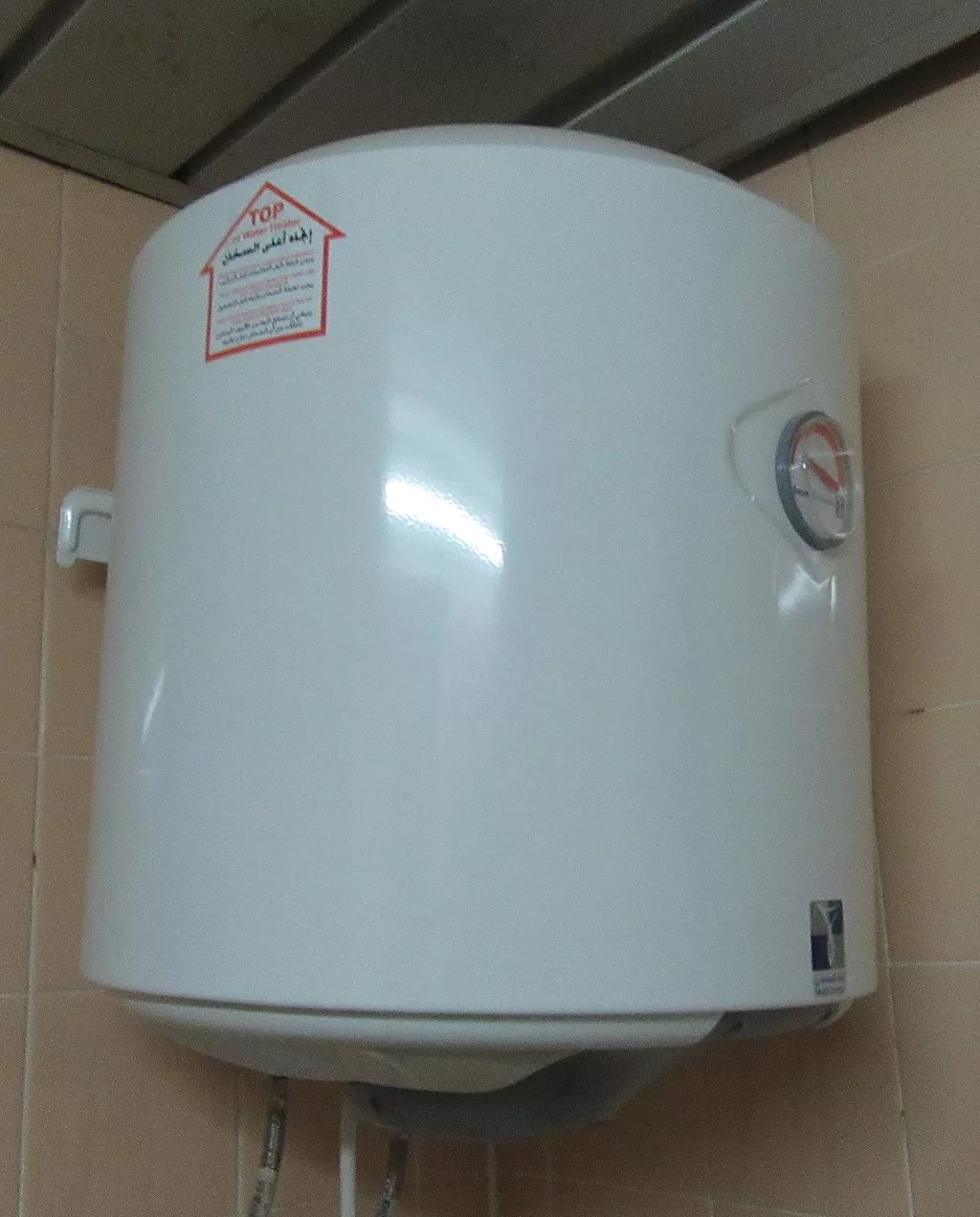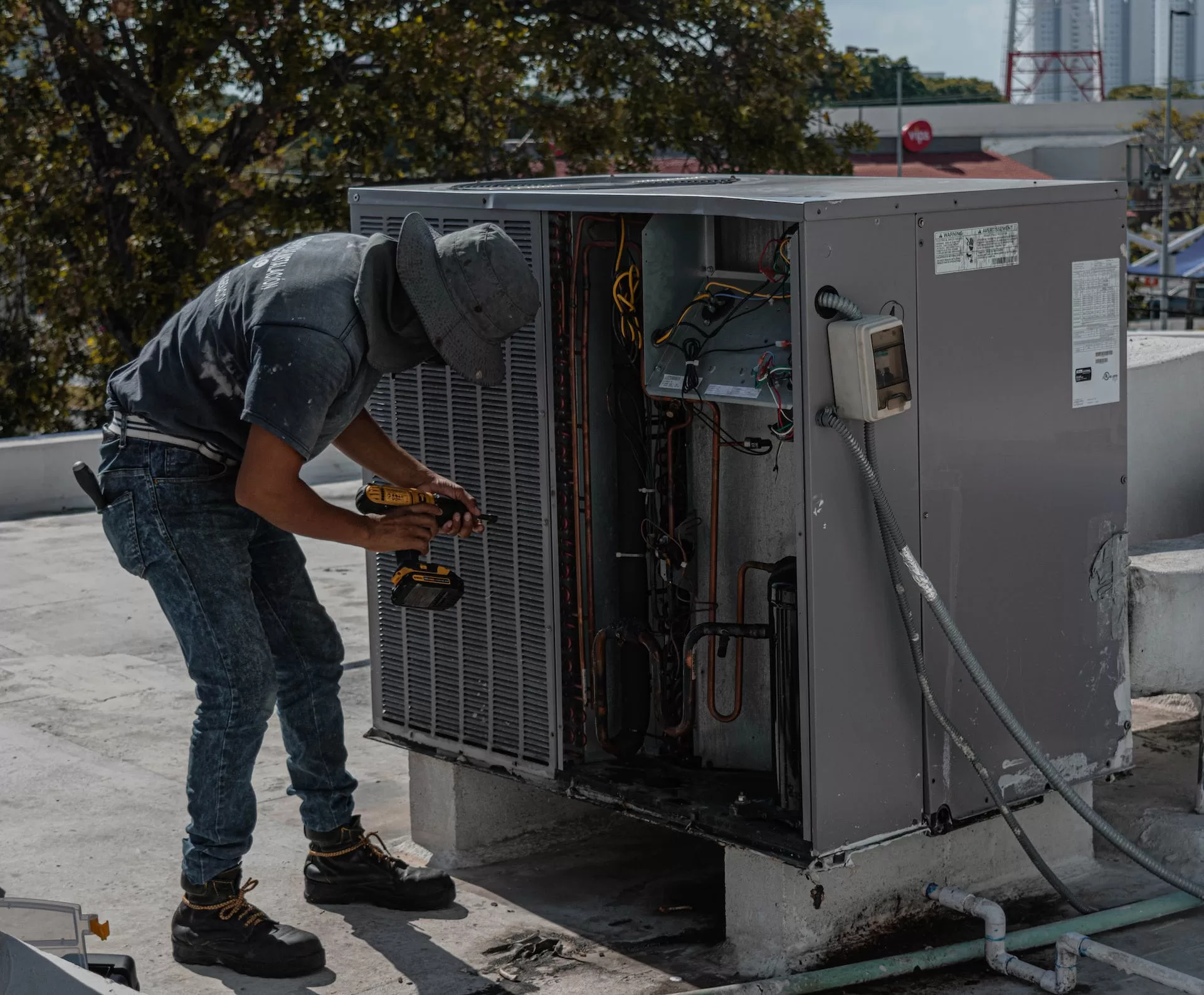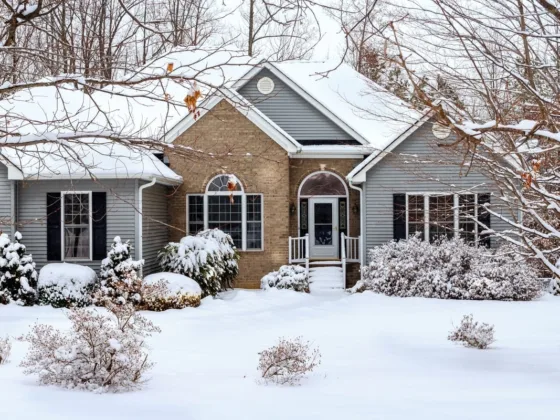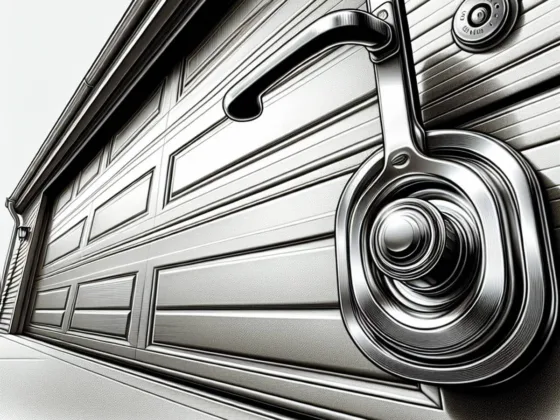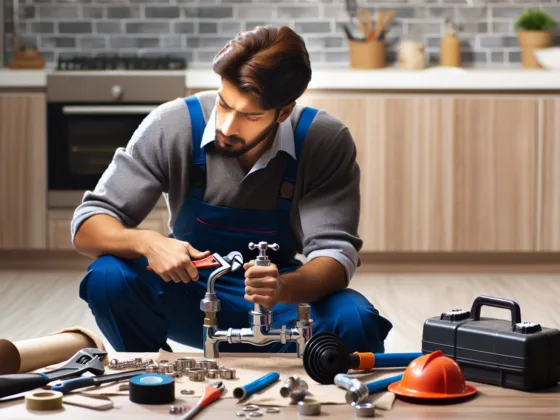Embracing Technology for Home Comfort
In the modern age, technology is woven into every aspect of our lives, including how we manage our home environments. One of the most crucial components in this endeavor is the programmable thermostat. This device, central to any home with an HVAC (Heating, Ventilation, and Air Conditioning) system, allows us to maintain a consistent temperature within our living spaces.
The Role of a Thermostat in Energy Conservation
Not only does a programmable thermostat provide comfort, but it also serves as an essential tool in managing energy consumption. By using a thermostat, you can potentially decrease your electricity bill significantly. The idea behind this cost-saving feature lies in the fact that you can program the device to lower or raise the temperature during hours when you’re not at home or asleep – times when extreme temperatures aren’t necessary.
Understanding How Thermostats Function
The operating principle of a thermostat is fairly straightforward. It utilizes a set of mechanisms – including valves, switches, and relays – to produce electrical signals. These signals are generated whenever the room’s temperature either exceeds or falls below the pre-set level. This electrical signal then activates your HVAC system to restore the room temperature back to your preferred setting.
Getting Support When You Need It
If you encounter any problems with your thermostat or HVAC system, remember that professional help is just a call or click away. Whether it’s routine maintenance or emergency repairs, companies like Birmingham Plumber and Absolute Electrical Heating and Air are ready to assist.
Remember: A well-maintained HVAC system not only saves energy but also extends the life of your equipment.
Having a programmable thermostat at home provides more than just convenience – it offers substantial savings on energy costs while ensuring a comfortable living environment. Don’t hesitate to reach out to professionals if you need assistance with your thermostat or HVAC system.
Understanding the Functionality of a Programmable Thermostat
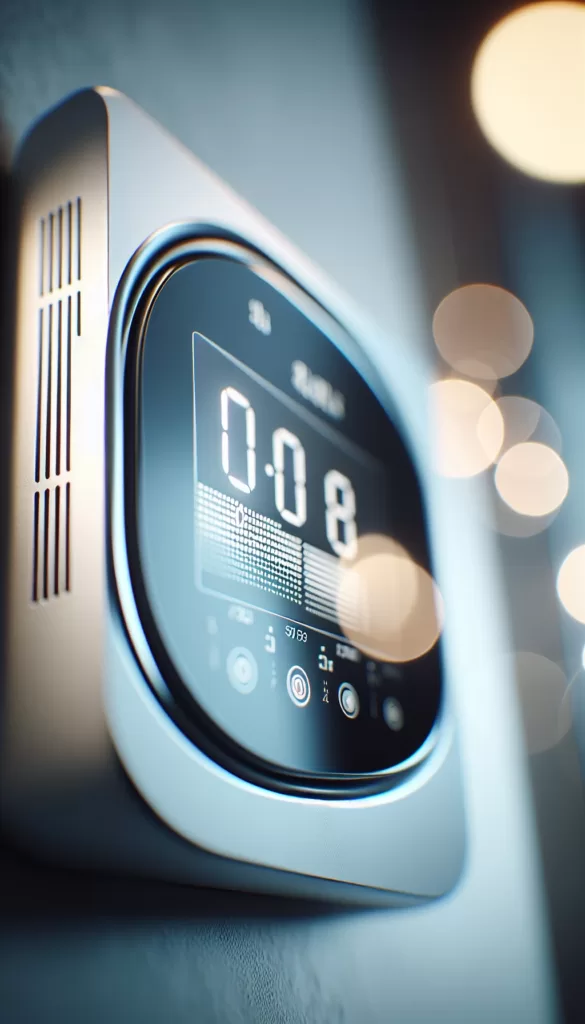
Before we dive in, let’s first understand what a programmable thermostat is. A programmable thermostat is an innovative device engineered to automatically adjust the temperature of your home’s heating and cooling system based on a pre-set schedule. This technology offers substantial energy efficiency and comfort by maintaining optimal room temperature throughout the day without manual interference.
The Role of Programmed Settings
Programmable thermostats operate using a sequence of programmed settings tailored to cater to your specific temperature needs at different periods. For instance, you can program it to raise the temperature just before you wake up, lower it when you leave for work, increase it again before you return, and finally decrease it when you go to bed. This automatic adjustment ensures optimal comfort while also saving energy.
Fun Fact: Did you know that according to the U.S. Department of Energy, you can save up to 10% a year on heating and cooling by simply lowering your thermostat by 7-10°F for 8 hours per day from its normal setting?
Gas/Electric Switch: An Essential Component
An integral part of these types of thermostats is the gas/electric switch. This switch plays a crucial role in controlling the g-fan (furnace fan) within the thermostat’s circuit. It’s designed to regulate whether heat or cool air is distributed throughout your home depending on your preferences and external weather conditions.
Troubleshooting Thermostat Issues
However, like any other electrical device, there may be instances where the circuit fails to operate appropriately due to various reasons ranging from wiring issues to mechanical failure. In such cases, professional help is recommended.
Absolute Electrical Heating and Air is a reputed company that specializes in resolving such issues efficiently. Their team of experienced professionals can diagnose and rectify any problems related to your programmable thermostat or HVAC system, ensuring smooth operation and optimal performance.
Unraveling the Complexities of Programmable Thermostats
The primary purpose of a programmable thermostat is to provide you with a sense of control and convenience. This modern gadget allows you to “set it according to your needs and forget it,” thereby making your daily life considerably easier.
However, with numerous setting options available, it’s natural for anyone to feel overwhelmed. One common point of confusion is whether to set your thermostat on gas or electric. Here, we will delve into this topic and hopefully clear up any misunderstandings.
Gas or Electric: Which one to choose?
Technically speaking, both settings can operate effectively:
- There shouldn’t be any significant issue if an electric furnace is set on gas or vice versa.
- Regardless of the setting, the furnace controls when the fan operates whenever heating is needed.
- The main distinction between these two settings is how long the fan blower runs in auto mode, which happens after the unit switches off.
Delving Deeper into the Differences
To utilize residual heat more efficiently, the fan blower tends to run longer in the electric setting (or auto mode). In contrast, when set on gas mode,
- The thermostat controls the fan only when the heating system is switched off.
- The furnace takes over control of operation sequences with 24 volts indicating when to run.
Understanding Electric Models
On an electric model, the 24-volt power heat sequencers use a small heater within them. Notably, each set of sequencers in a thermostat has fan contacts wired to operate fans whenever any sequencer gets powered.
- In conclusion, understanding how programmable thermostats work might seem complex at first glance. However, with a bit of knowledge and experience, you’ll be able to optimize your home’s heating and cooling systems efficiently and potentially save on energy bills!
A User’s Guide to Thermostat Maintenance
In the realm of modern home conveniences, a thermostat plays an integral role. It regulates your home’s temperature, ensuring comfort and energy efficiency. However, despite the benefits of having a top-notch thermostat installed in our homes, homeowners often make costly mistakes that can result in high energy bills and potential damage to their systems. Here are some tips to help you maintain your thermostat effectively and save money in the long run:
1. Manage Your Temperatures Wisely
Avoid going to extremes with your temperature settings. It may be tempting to crank up the cooling or heating to make a room comfortable quickly, especially during harsh weather conditions. However, this approach doesn’t speed up the process; instead, it puts undue stress on your system and consumes more energy.
Remember: Gradually adjusting your thermostat is better for both your comfort and your wallet.
2. Don’t Set It and Forget It
There’s a common misconception that leaving your thermostat at a constant temperature is the most efficient approach. In reality, this practice could lead to higher electricity bills over time. Make it a point to adjust your thermostat’s temperature setting when you’re away from home for extended periods.
Tip: Lower the temperature by a few degrees during winter or raise it slightly in summer when you’re out – this can provide significant savings.
3. Strive for Consistency
While it’s crucial to adjust temperatures based on occupancy, avoid constant tinkering with the settings. Regularly changing your thermostat’s temperature setting can cause inefficient operation and wear out your system.
4. Invest in Quality Batteries
Ensure that you use name-brand batteries in your thermostat for optimal performance and longevity.
5. Regular Battery Replacement
Make it a habit to change the batteries annually as part of your routine thermostat maintenance.
6. Skip the Bargain Batteries
While it may be tempting to save a few bucks on cheaper batteries, they often lack the power needed for efficient operation and may require frequent replacements.
7. Utilize the Override Function Smartly
Most programmable thermostats allow you to temporarily override the set schedule without disrupting the regular programming. Use this feature when necessary but remember to resume to your regular programming for energy efficiency.
By following these tips, you can ensure that your thermostat operates efficiently, prolonging its lifespan and maximizing your home’s energy efficiency.
Understanding Different Types of Thermostats
A thermostat is a vital component of your heating, ventilation, and air conditioning (HVAC) system. Its primary function is to regulate the flow of electric current to a heating or cooling unit, ensuring that your living or working environment maintains a comfortable temperature.
Interesting Fact: Apart from its primary usage in HVAC systems, a thermostat also plays an integral role in some fire-detection warning systems.
In this section, we will delve into different types of thermostats, each with unique features and benefits. Understanding these will empower you to make informed decisions when considering thermostat maintenance or replacement.
Low Voltage Thermostats: A Comprehensive Overview
Low-voltage thermostats are a popular option for homeowners and businesses alike, owing to their versatile compatibility with various heating systems. These thermostats are designed to work in conjunction with central heating systems that utilize oil, gas, or electricity.
Key Features of Low Voltage Thermostats
These types of thermostats are notable for their ability to convert high-voltage power, from your standard household supply, into a much lower voltage, typically around 24 volts. This conversion process offers two significant benefits:
- Energy Efficiency: By operating at a lower voltage, these thermostats consume less energy. This can lead to noticeable savings on your utility bills over time.
- Safety: Since they operate at a lower voltage, they are safer to handle than high-voltage thermostats. This lower voltage significantly reduces the risk of electrical shock.
Interesting Fact: Despite their name, low-voltage thermostats can control both heating and cooling systems.
Here’s a quick breakdown of the main features:
- Reliability: These thermostats are known for their dependability, providing consistent temperature control.
- Compatibility: They’re compatible with a wide range of central heating systems including oil, gas, and electric.
- Energy-saving: Due to the low voltage operation, these thermostats help reduce energy consumption.
- Safety: The risk of electrical shock is significantly minimized because of the low-voltage operation.
When considering thermostat options for your home or business, understanding the unique benefits and capabilities of low-voltage thermostats can aid you in making an informed decision that aligns with your specific needs and priorities.
Line Voltage Thermostats
Line-voltage thermostats, as the name suggests, operate at the same voltage as your home’s electricity supply. This typically means they operate at either 120 or 240 volts, depending on your home’s electrical system. These thermostats are often used for direct heat sources, providing a more immediate response to temperature changes.
Key Features of Line Voltage Thermostats
The distinct characteristics and advantages of line-voltage thermostats make them an ideal choice for certain heating systems:
- Direct Heat Control: Unlike low-voltage thermostats that indirectly control the temperature by switching the heating system on and off, line-voltage thermostats directly control the heating system. This leads to immediate and responsive temperature adjustments.
- Ideal for Baseboard Heaters and Radiant Systems: Line-voltage thermostats are typically used with electric resistance heating systems such as baseboard heaters and radiant systems due to their high voltage capacity.
- Simplicity: Most line voltage thermostats are simple mechanical devices that work much like a light switch, turning your heater on or off based on the room’s temperature.
- Independent Functioning: Since they connect directly to the electrical circuit, these thermostats can control individual heating units independently in different rooms, offering more personalized comfort.
Safety Considerations
While line-voltage thermostats offer several benefits, it’s important to handle them with care due to their high voltage operation. Always consult a professional when installing or repairing these devices to avoid electrical hazards.
Interesting Fact: Despite their high-voltage operation, line-voltage thermostats are often more cost-effective than low-voltage models because they don’t require a transformer to adjust the voltage.
When choosing a thermostat for your home, understanding these key features will help you determine if a line-voltage thermostat is right for your specific heating system.
Mechanical Thermostats: A Classic Choice
Mechanical thermostats, also known as analog or manual thermostats, are traditional devices that have been a staple in homes for decades. They use bi-metallic strips or gas-filled bellows to detect temperature changes. While these types of thermostats may lack the advanced programmable features and digital interfaces of their modern counterparts, their simplicity, reliability, and durability make them a time-tested choice for many homeowners.
Simplicity and Ease of Use
The main advantage of mechanical thermostats lies in their straightforward operation. With no complex digital menus to navigate, you can adjust the temperature simply by moving a lever or dial. This simplicity makes mechanical thermostats an especially good option for those who prefer a hands-on approach or find digital interfaces confusing.
Durability and Reliability
Mechanical thermostats are known for their robustness. Built with sturdy materials like metal and glass, they can withstand a fair amount of wear and tear. The absence of intricate electronic parts also means fewer components could potentially fail. As a result, these devices often enjoy a long lifespan with minimal maintenance.
Cost-Effective Solution
From an economical perspective, mechanical thermostats are usually cheaper than programmable or smart thermostats. Not only is the initial cost lower, but since they require less frequent replacements and repairs, they may also offer better long-term value.
Interesting Fact: Despite its vintage look and feel, many homeowners still opt for the mechanical thermostat due to its cost-effectiveness and low maintenance needs.
While mechanical thermostats may not offer customizable programming or remote control options provided by some newer models, their simplicity and durability continue to make them a reliable choice for controlling home heating systems.
Programmable Thermostats: An Optimal Choice for Convenience and Efficiency
Programmable thermostats are modern, user-friendly devices that offer a unique blend of convenience and energy efficiency. These innovative devices allow homeowners to create specific temperature schedules tailored to their lifestyles. This means your HVAC system automatically adjusts temperatures based on the time of day or the day of the week, ensuring optimal comfort and significant energy savings.
Key Features
- Scheduled Temperature Control: With a programmable thermostat, you can set different temperature levels for various time slots throughout the day. For instance, you could program the thermostat to lower the heat when you’re at work and increase it right before you arrive home.
- Energy Conservation: By operating your heating or cooling system only when necessary, you can significantly reduce energy usage, which not only benefits the environment but also leads to substantial cost savings on utility bills.
Advantages of Programmable Thermostats
- Ease of Use: Once you set your preferred temperature schedule, the thermostat takes care of the rest, leaving you free from constantly tweaking settings.
- Energy Efficiency: As per U.S. Department of Energy statistics, homeowners can save up to 10% a year on heating and cooling by simply lowering their thermostat by 7-10 degrees Fahrenheit for 8 hours per day.
- Improved Comfort: Programmable thermostats ensure your home is always at your preferred temperature when you’re there.
Interesting Fact: According to a study by EnergyHub, nearly 40% of US households with broadband internet have a programmable thermostat.
In essence, a programmable thermostat combines modern technology with practical functionality to provide an effective solution for managing home temperatures – ensuring both comfort and energy efficiency.
Delving Deeper into Electronic Thermostats
Electronic thermostats are a step up from the traditional mechanical and programmable models. They employ electronic sensors to detect and respond to temperature changes, offering a level of precision that is simply not possible with older thermostat types.
Key Features of Electronic Thermostats
Electronic thermostats come equipped with a multitude of features designed to offer ultimate convenience and accuracy in temperature control:
- Digital Displays: Unlike their mechanical counterparts, electronic thermostats feature clear digital displays. This offers easy-to-read temperature settings at a glance, ensuring you’re always aware of your home’s current conditions.
- Touchpad Programming: For ease of use, many electronic thermostats come with touchpad programming. This allows for effortless adjustment of settings and scheduling, making it simpler than ever to maintain your ideal home environment.
- WiFi Connectivity: Perhaps one of the most notable features of modern electronic thermostats is WiFi connectivity. This enables remote control via smartphones or computers, allowing you to adjust your home’s temperature from anywhere at any time.
Interesting Fact: According to a survey by Parks Associates, as of Q4 2020, 34% of US broadband households own a smart thermostat that can be controlled using a smartphone.
Making The Right Choice
Understanding the workings and benefits of each type of thermostat can help you make an informed decision on which model aligns best with your HVAC system and meets your specific needs.
When considering an electronic thermostat, it’s essential to weigh its advanced features and precise control against factors such as cost and compatibility with your HVAC system. By doing so, you can ensure you choose a thermostat that will deliver energy efficiency, convenience, and cost-effectiveness.
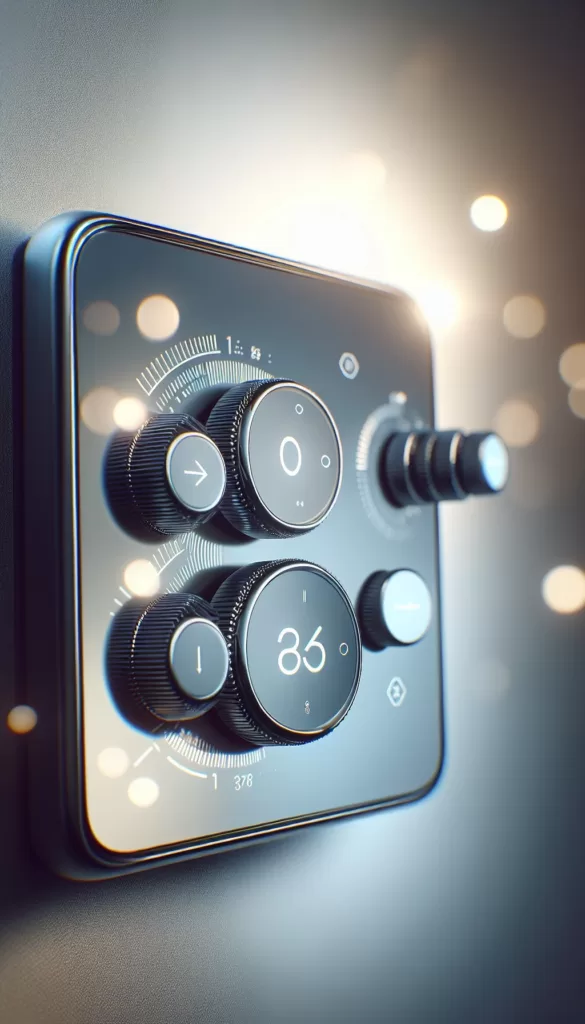
Conclusion
Thermostats are important for controlling temperatures in our homes. The right thermostat depends on the user’s needs and the HVAC system installed. Here’s a quick summary of the different types:
- Mechanical thermostats: Simple and durable, but lack advanced features.
- Programmable thermostats: Provide convenience and energy efficiency with temperature schedules.
- Electronic thermostats: Offer precise control with digital displays and WiFi connectivity.
By understanding these options, homeowners can choose the best thermostat for their lifestyle, energy conservation, and cost-effectiveness.
FAQs(Frequently Asked Questions)
Technically speaking, both settings can operate effectively. The gas setting is for gas-powered heating systems, and the electric setting is for electric-powered heating systems.
A programmable thermostat not only provides comfort but also helps conserve energy by allowing you to set specific temperatures for different times of the day.
The operating principle of a thermostat is fairly straightforward. It measures the temperature and compares it to the desired setpoint, then activates the heating or cooling system as needed.
If you encounter any problems, it’s best to seek support from a professional HVAC technician who can diagnose and resolve the issue.
A programmable thermostat operates using a sequence of programmed settings, allowing you to customize temperature settings based on your daily schedule.
An integral part of these types of thermostats, the gas/electric switch allows you to select the appropriate setting based on whether your heating system is gas-powered or electric-powered.
